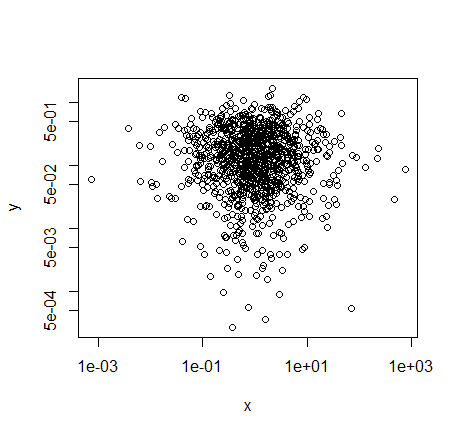I have been asked whether there is any relationship between two variables $X$ and $Y$. I have done a simple regression and the confidence intervals suggest a small significant relationship. However, these variables are nonnegative and most of the points are "close" to (0,0) --- in the sense that in a graph of the points partitioned into a grid pattern most of the points will be within the square with the "south west" corner at (0,0).
Does this violate the assumptions of regression? I believe "yes" because the errors in the regression might not be normally distributed (they would be bounded for a given $x\in X$).
How can I best answer the question about the relationship between $X$ and $Y$? Should I just use simple regression or are there ways to get around this possible violation?
My data looks a bit like
set.seed(5)
x <- abs(rcauchy(1000,0,1))
set.seed(5)
y <- rexp(1000,5)
plot(x,y)
though there is no reason to believe that the underlying distributions of either are cauchy or exponential.




